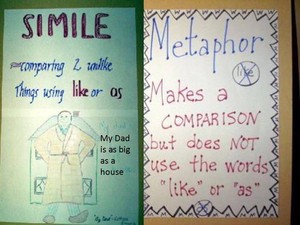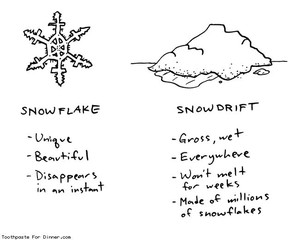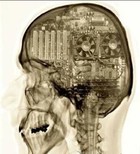New Metaphors Spur Innovation
How We Describe Things Impacts How We Think about Using Them
What if we started thinking in new ways about computer systems, networks, devices and the software they contain? What new metaphors should we use? Why are metaphors important? How do they limit our ability to dream up something new and different? What if the easiest way to spawn innovation were to change the metaphors you use to describe how something might work? That’s what pioneering technology architect and entrepreneur, Peter Horne, has decided to do.
NETTING IT OUT
When we describe computer systems, networks, and software applications to one another and explain how they work, we use a lot of metaphors. We talk about “windows,” “mice,” “virtual machines,” “cloud computing,” “client and server,” “publish and subscribe.” According to Wikipedia, “A metaphor is a figure of speech that describes a subject by asserting that it is, on some point of comparison, the same as another otherwise unrelated object.”
Metaphors are supposed to make things easier for people to understand what other people are talking about, by using an analogy with something familiar. The window on a computer screen isn’t exactly like the window on a car or a house, but there are some similarities—you see things through it, you can open and close it.
People who design and build computer systems use a lot of metaphors. Peter Horne has been designing and implementing systems for over two decades. Recently, he has embarked on the design of a system that is quite different from others he has designed in the past. It’s probably going to be a major breakthrough in operating system design as well as in financial services.
In this article, Peter explains how thinking about metaphors differently led him to discover a different approach to system design.
1. Kids’ drawings explain the differences between Simile and Metaphor. (Images courtesy of scholarship@kkc)
Metaphor
2. Good examples of how to select the right metaphor from Toothpaste for dinner.com—a cartoon site.
USING METAPHORS TO DESCRIBE INFORMATION TECHNOLOGY
Why Am I Interested in Metaphors?
I started my career as an experimental psychologist working as a research assistant in a laboratory where we studied how animals (rabbits) learned in very controlled learning experiments (think Pavlov’s dogs and Skinner Boxes), and then applied this data to theoretical learning models which could be modeled in computer simulations. I would develop the simulations and run them on the computer; then we would run the experiments with the animals and compare the data. In other parts of the lab, we actually looked at how the brain pathways changed between experimental groups and control groups.
Why a Computer Isn’t a Good Metaphor for the Brain. It’s nearly 25 years later, and I am still reading articles in which the predominant metaphor for the brain is that it is like a computer, and the computer is like a brain. I am definitely out of touch with the details of theoretical learning research today, but even then we knew that a binary model of computing was too simplistic to explain the brain. The central nervous system certainly has aspects that can be described as being like a digital computer, but it also sits inside a body which functions with a very analog endocrine system. And, given what we are learning about quantum physics, and how cellular systems function like nano-machines--rather than as little test tubes for chemical reactions, I believe I can safely conclude that we will not see an algorithm running on a Von Neumann architecture (i.e., today’s computers) that comes anywhere near imitating the human brain. Systems may demonstrate intelligent behaviors, but they are not any closer to being analogs of human intelligence. And that is because the metaphor doesn’t work beyond the simple explanation.
Is the Brain a Computer?
3. Many people try to compare our brains to computers. But that metaphor isn’t very accurate.
From Science to Banking & Business: Metaphors Abound
I moved from research to finance in an almost stereotypical fashion. A headhunter working for a U.S. bank convinced me that double pay and a new car was a good enough reason to retire the lab coat and work on intelligent trading systems. The project I worked on was a failure because it was too fussy and took too long, and trading businesses are not famous for their patience with either time or detail. Thankfully, I was recruited over into the funds management business of the firm where they had some very big and hard technical problems and a motivation to be patient. It was there that I learned all about enterprise computing and then ultimately ended up in executive roles before deciding I wanted to do some detailed work again. The only person who would pay me to do that was me, so I exited corporate life to become an entrepreneur.
As a rule, I do not normally appeal to the authority of my experience; however, I believe that I can assert that I have seen many, many metaphors over my career: Science metaphors (it’s like a computer), system metaphors (it’s like a brain), business metaphors (it’s like a person), social metaphors (it’s like a family), political metaphors (it’s like a tribe) to name a few. The human need to explain things results in many metaphors because metaphors are useful in this regard…
(Download the PDF for the entire article.)
Sign in to download the full article
0 comments
Be the first one to comment.






